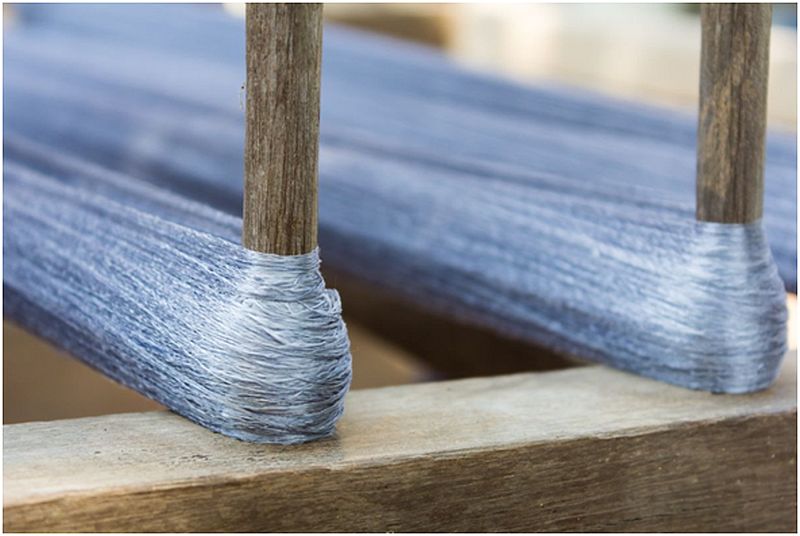The world of textiles is vast and diverse, with many natural and synthetic materials that vary in their properties, aesthetics, and environmental impact. Among these materials, linen fiber stands out as one of the most ecologically friendly and versatile resources. To truly appreciate the unique characteristics of linen, it’s essential to delve into its cultivation process.
The Basics of Linen Fiber Cultivation
Linen fabric is derived from the stalks of the flax plant (Linumusitatissimum). In order to efficiently extract the valuable fibers from the rest of the plant, several steps are undertaken:
- Seed sowing and growth;
- Harvesting by pulling or cutting;
- Rouissage or retting to separate the fibers;
- Breaking and scutching to remove unwanted material;
- Hackling or combing to refine the fibers;
- Spinning, weaving, and other production processes.
In this article, we will focus on the critical rouissage stage, which greatly influences the quality of the end product.
Rouissage: The Decisive Process in Producing Quality Linen Fiber
Rouissage, also referred to as retting, is a crucial step in linen fiber cultivation. It consists of allowing the harvested flax stalks to undergo controlled decomposition through the action of microorganisms, enzymes, and moisture. This gentle rotting process helps loosen and dissolve the pectin binding the cellulose fibers to the woody core of the stem, allowing for easy separation without causing damage to the fibers.
Methods of Rouissage
There are several methods of rouissage, each with its own set of advantages and limitations. The choice of method depends on factors such as the climate, available resources, and desired fiber quality. The most common rouissage techniques include:
· Dewretting
Flax stalks are spread out in even layers on grassy fields, allowing dew and rainwater to moisten them while microorganisms in the soil carry out the rotting process. This method typically takes two to three weeks and results in a grayish coloration and variable fiber quality.
· Waterretting
Stalks are submerged in water – either in ponds or tanks – for up to ten days. The warmer the water, the quicker the process occurs; however, care must be taken not to over-ret, which can result in weaker fibers. Water retting produces a more uniform product with lighter coloration but has higher environmental impact due to potential water contamination.
· Green retting
In this preliminary stage of rouissage, fresh flax plants are laid out to wilt. Though it may shorten the time required for subsequent retting processes, it is less commonly used due to difficulties in controlling fiber quality.
The Impact of Rouissage Quality
About 70% of the quality of linen fiber depends on proper rouissage. Ideally, well-retted flax should have an even, light color with flexible, resilient fibers that allow for easy separation during scutching. Over-retting can weaken the fibers, dull their color, and make them susceptible to breakage. Under-retting results in difficulty separating residual woody material from the fibers, leading to a rough and uneven linen fabric.
Moving Beyond Rouissage: Other Factors in Linen Fiber Cultivation
While rouissage plays a pivotal role in determining the quality of the linen fiber, other stages in the cultivation process are also important in delivering an exceptional end product. These steps include:
1. Seed Selection and Sowing
The choice of flax variety, as well as the sowing density and timing, affects both the yield and the quality of the resulting linen fibers. Planting seeds densely leads to taller plants with finer fibers, while properly spaced sowing allows for thicker stems and more robust fibers suited to upholstery applications.
2. Harvesting Techniques
Flax can be harvested by pulling or cutting. Pulling – usually done by hand – ensures that the entirety of the stalk is extracted, including the longer root fibers which contribute to overall strength. Cutting by machine leaves valuable root fibers in the ground but offers increased efficiency and cost-effectiveness.
3. Breaking, Scutching, and Hackling
After appropriate rouissage, the flax stalks undergo further processing to remove unwanted materials and refine their fibers. This entails crushing (breaking) the woody cores, scraping away (scutching) them, and combing (hackling) through the fibers to straighten and align them for spinning.
4. Environmental Considerations
In comparison to many other textile materials, linen stands out as an environmentally-friendly option. Flax requires less water and pesticides to grow than cotton. Additionally,the retting process decreases dependence on chemicals. When compared to synthetic fabrics derived from nonrenewable fossil fuels, linen proves a sustainable linen clothing and eco-conscious choice.
In conclusion, the process of cultivating linen fibers involves several critical steps, with rouissage playing a central role in determining quality. By understanding and controlling these various processes, better insights can be gained to produce environmentally-friendly and high-quality linen fabrics coveted by both producers and consumers alike.
Article Submitted By Community Writer




